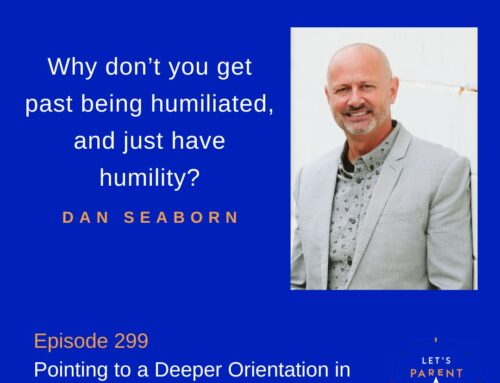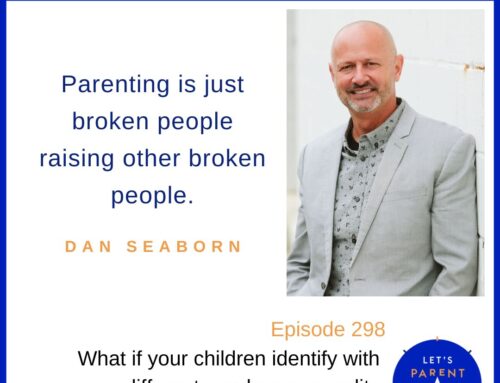Diane Corson, an Occupational Therapist with the Florida Elks Children’s Therapy Services, joins me for two fascinating podcast as we look into the world of children with sensory processing disorder. As promised, here are Diane’s notes from our talks. Be sure to check out LPOP 71 and LPOP 72 for our two part discussion. Even if you don’t have children with sensory processing disorder, 1) you know someone who does (I do!) and 2) some of these same strategies will be a blessing in any home! The first half of these notes are definitions and descriptions of the various terms associated with Sensory Processing Disorder The second half outline strategies for helping children with SPD as discussed in the two podcasts. Thank you Diane for being an amazing therapist and a great teacher!
What is Sensory Processing Disorder?
Sensory Processing Disorder is difficulty organizing sensory information in the brain to make an adaptive response. Sensory and motor pathways are being formed in the brain, beginning in utero throughout childhood and even in adult years. Most children are well integrated by 8-12 years. Those with Sensory Processing Disorder do not “feel” sensations the way an average person will.
What is Sensory Discrimination?
-
Ability to pull information from one or multiple sensory systems to make sense of task. Impacts ability to perform motor tasks and respond to sensory cues from body during tasks. Sensory Systems help answer questions like:•How heavy is this toy? How can I maneuver it?•Why do I feel something so scratchy when Mom is helping me get dressed?•What is this huge, pointy rough thing Dad is shoving in my mouth? I feel like I’m going to choke. When will it end? Why is this happening?
What is Sensory Modulation?
-
Ability to respond to sensory input from the body and/or the environment. Ability to attend to instruction rather than continually alert to background information. State of arousal, alertness, attention
-
Sensory Registration: Level to which child notices sensory stimulation; some children notice every sensation; some notice much less
-
Sensory Defensiveness: actively avoids sensory stimulation; retreats from new situations; acts out in order to avoid stimulation
-
Sensory Seeker: actively seeks out sensory stimulation; wants to add intensity; creates excitement and change
What is Sensory Regulation?
- Ability to achieve, monitor, change and maintain a calm and alert start to meet the demands of the situation. Foundation to function in society. Sensory regulation strategies impact modulation.
- Stage 1: Regulate temperature, muscle tone, sleep/wake, survival
- Stage 2: Other people help child maintain a calm, alert state
Sensory diet
Adaptive strategies
Teacher/parent behavioral strategies - Stage 3: Higher level cognitive skills and ability to problem solve
Use of social stories
Self talk
What Causes Sensory Processing Disorder?
- Studies vary in number of children affected; 1 in 20 children/1 in 6 children
Spectrum Disorder: varies greatly in severity - Perhaps genetic, environmental or combination
- In utero: drug or alcohol use
- Birth complications: prematurity, low birth weight
- Environmental: abuse, neglect
Parent Strategies to help with Sensory Processing Disorder
-
Sensory Diet
-
Accommodations/adaptations to Environment
-
Behavioral Strategies
-
Teach emotional control
Sensory Diet
- Every two hours a typical neurological system resets
- Movement, proprioception, and touch are strong sensory inputs
- Use in combination
- One sensory system will impact another system
- Put sensory stimulation into daily routine
- Touch and proprioceptive input before brushing teeth, eating, getting dressed
Massage- Use various materials
- Different lotions scents
- Brush outside of cheeks before inside of mouth
- Count/sing song so child knows how long it will last
- If having difficulty, stop and give movement break, then go back and finish
- Movement every day
- Ride bicycle before school
- Visit a park
- Play in back yard
- Heavy work every day
- Carrying, lifting, moving
- Resistive body movements, like yoga poses, push ups, planks
Sensory Input and Functional Tasks
- Vacuum
- Clean sliders
- Clean baseboards
- Lift and carry toy baskets/laundry baskets
Sensory Diet: Bedtime
- Routine
- Massage
- Deep pressure
- Weighted blanket
- Essential oils
- Music
- Lighting
Adaptations to Environment
- Use a timer
- Use a schedule with pictures
- Change the area where something is performed
- Ex: homework in quiet closet versus kitchen
- Change the seating
- Ball, rocking chair, cushion, stand, different fabric/blanket, lap pad (tube sock with rice)
- Fidget toy
- Weighted blanket
- Pressure vest/pressure garments/tight undershirts
- Music
- Calming: classical and Baroque periods
- Alerting: Rock, violin
- Smells
- Calming: vanilla, lavender, banana, coconut
- Alerting: citrus, peppermint, coffee, cinnamon, rosemary, pine
- Vision
- Calming: natural lighting, decreased clutter
- Alerting: bright light, high contrast colors
Behavioral Strategies
- Get attention BEFORE giving direction
- First/Then
- Give choices
- Teach active problem solving
- Ask questions
- Fill in the blanks
Emotional Control
- Acknowledge the emotion
- Recognize content of emotion. Listen for feelings.
- Label the emotion: “You are feeling sad.”
- Describe the emotion: “You are crying. Your face looks like this.”
- Give 3 empathy statements: “You have to stop playing and that is hard. When you play with that toy, you are happy. Stopping is no fun. It makes you feel sad.”
- Wait…for response from child
- Child might agree or disagree
- If disagree, then figure out next emotional choice
- Problem Solve
- Repeat!







This is what my son deals with. He is also on the spectrum so that adds to it. These are defiantly things that parents can and should be doing. I also feel that parents tend to be “embarrassed” to say that their child is like this because many will just assume that their child is just being difficult. But the struggle is real. As a parent it is sometimes our job to educate those that we are around that our children are struggling these issues. Kids on the spectrum will naturally have some sort of sensory processing as well. It will show up in social situations. My son, Austin, will not be around bread (he can smell it a mile away), he will avoid large crowds because of the visual aspect at the noise. These are just a few but it’s what we deal with. Thanks for sharing this buddy!
Thanks for sharing, Jeff. We need to get past the stigma of embarrassment to help our entire families thrive. The term “quiet desperation” comes to mind when I think of the many parents who feel stuck or ashamed to admit that there are challenges beyond what they know how to help. But these aren’t issues that anyone naturally knows how to address. It truly takes a village of experience to help special needs children!